How to Tell Bad Catalytic Converter Symptoms
Very few car parts last for the entire life of a vehicle, but a catalytic converter attached to a properly running engine can last for years. As part of the vehicle’s exhaust system, the catalytic converter uses heavy metals to chemically react with exhaust gasses and reduce the number of harmful pollutants entering the atmosphere. When a catalytic converter isn’t working properly, you may not be able to register your vehicle for on-road use and its engine performance will be negatively affected.
Warning signs of a bad catalytic converter
If your vehicle has any of these warning signs, then your old catalytic converter may need to be replaced.- Check engine light: If you have a 1996-or-newer (OBDII) vehicle, a check engine light may indicate a problem with your catalytic converter. A diagnostic scan tool plugged into the OBDII port under the dash may show a P0420 or P0430 code.
- Sulfur smell: If you smell rotten eggs when your vehicle is running, then the catalytic converter may not be catalyzing the sulfur in the exhaust gas.
- Emissions test failure
- Exterior discoloration
- Sluggish acceleration
- Decreased fuel economy
- Hard-start/no-start engine condition
At-home diagnosis
If any of the warning signs are present, then two at-home tests may help identify a bad catalytic converter. If you don’t have the tools or the inclination, then an auto repair/muffler shop, dealer or mechanic can perform these tests for you.
- Exhaust temperature: Once the engine is up to normal operating temperature, measure the exhaust temperature directly, before and after the converter, using an infrared thermometer. If there is a big difference (at least 100 degrees), then the converter may need to be replaced. A large temperature difference can result from a clogged converter that traps exhaust gasses and makes it less efficient.
- Engine vacuum: If there is no check engine light on or your vehicle was built before 1996 (pre-OBDII), then an engine vacuum test may be necessary if there are other warning signs. When the engine is idling, hook up a vacuum gauge to the intake manifold and record the reading. Then, rev the engine to 2,500 RPM (a helper will make this easier) and observe the measurement again. If the gauge doesn’t return to a similar reading as it showed when idling, or it is very slow to do so, the converter could be faulty.
To find the right catalytic converter for your vehicle, use MagnaFlow’s Shop by Vehicle tool.
Have questions? Give us a call at 1-800-990-0905 and we’d be happy to help.
CATALYTIC CONVERTERS
SHOP NOW







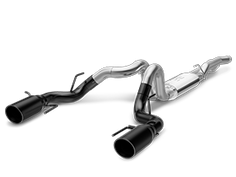
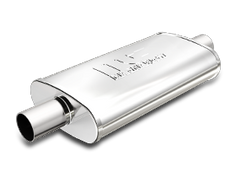
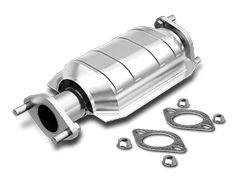
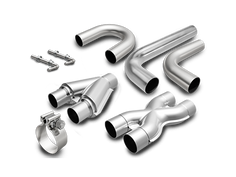
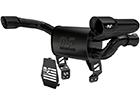










Comments